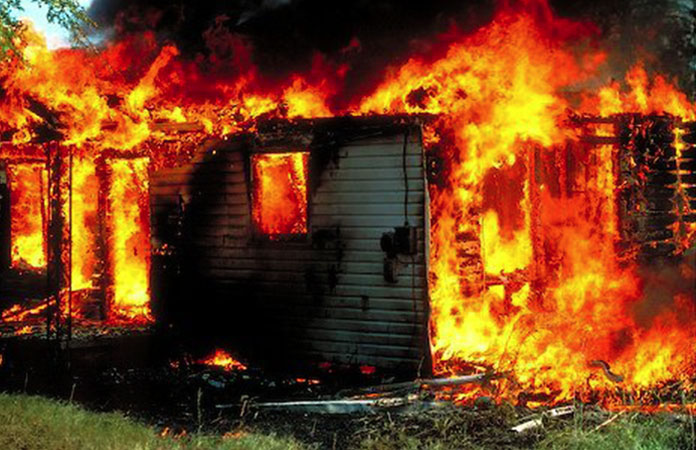
For a disaster preparedness plan, commence by having members of your family prepare a floor plan of the house. This should be done even if it is a one-room unit.
A ground sketch is simply an outline of the floor area. Once the sketch has been prepared, have family members place an x in the likely hazard areas in the house.
List the likely hazards based on family members' feed-back, e.g. grill on windows and doors can trap family members in the event of a fire:
Kitchen:
Likely area for fires to start. These hazards include:
-
Young children around a hot stove or boiling water
-
Chemicals stored in easy reach of young children
-
Matches left in reach of young children
N.B. Stress that chemicals should not be stored in bottles similar to those in which soda or drinking water is kept. Storage should also be out of the reach of small children.
Bathroom:
-
Water stored in bath tubs can be a source of danger for young children: this can lead to drowning. An alternative to storing water in bath tubs is to secure several large cardboard , place a garbage bag in each, place top of bag over edge of box and fill with water.
-
Medication stored in easy reach of children.
-
Persons tripping in bath tub and hitting head against wall or fixtures.
Living room:
-
Overloaded electrical circuits
-
Heavy items placed on shelves which can topple off in the event of an earthquake
-
Pictures hanging on wall which can fall off during an earthquake
General:
Burglar bars or grills on windows and doors, which can prevent easy exit from building or trap residents in depending on the location of the threat such as fire. Improperly anchored water tanks can also be dangerous during an earthquake. Once the hazards have been identified, have family members identify preventative measures.
Discuss the importance of having someone in the house trained in first aid. Arrangements for training can be done as a group through the local Red Cross Branch or Area Group. Have family members write down the possible hazards and preventative measures. These are to be attached to the back of the family disaster plan.
General tips for developing an effective family disaster plan
-
Prepared plans should be discussed with all family members and modified based on valid inputs.
-
Plans should include place for the family to meet if the disaster occurs while some family members are away and the area is sealed off, e.g. in the event of an earthquake, which blocks access into the area.
-
Children should be quizzed on the plan on a regular basis to keep it constantly in their minds.
-
Emergency drills should be conducted at least once per year. Practice leaving building blindfolded to assimilate thick smoke in the event of a fire.
-
Arrange with neighbours to look after each others' children in the event parents experience difficulty in getting home.
-
Prepared plans should be flexible; they should be adjusted according to circumstances.
Break family members into groups and have them prepare a list of specific actions/activities along with the names of individuals responsible for carrying out these actions, and time frame.
The following procedure should be followed:
Specific actions which should be included, if they have not been mentioned by the family members:
-
keep a flashlight with batteries or candles with adequate supply of matches.
-
keep basic first aid supplies at home.
-
identify emergency shelters in your area and establish contact with shelter managers.
-
store water in clean containers.
-
if advised to evacuate, secure home and leave allowing enough time to get safely to the shelter.
-
pit toilets can become over burdened during floods resulting in the discharge of effluent. Provisions should therefore be made to have the area disinfected after flooding which results in the release of effluent.
-
In countries with snakes, scorpions, etc. care should be taken to keep these out as they will seek shelter from the rain.
Solicit other ideas from family members. Based on discussion, stress the need for a family fire plan.
